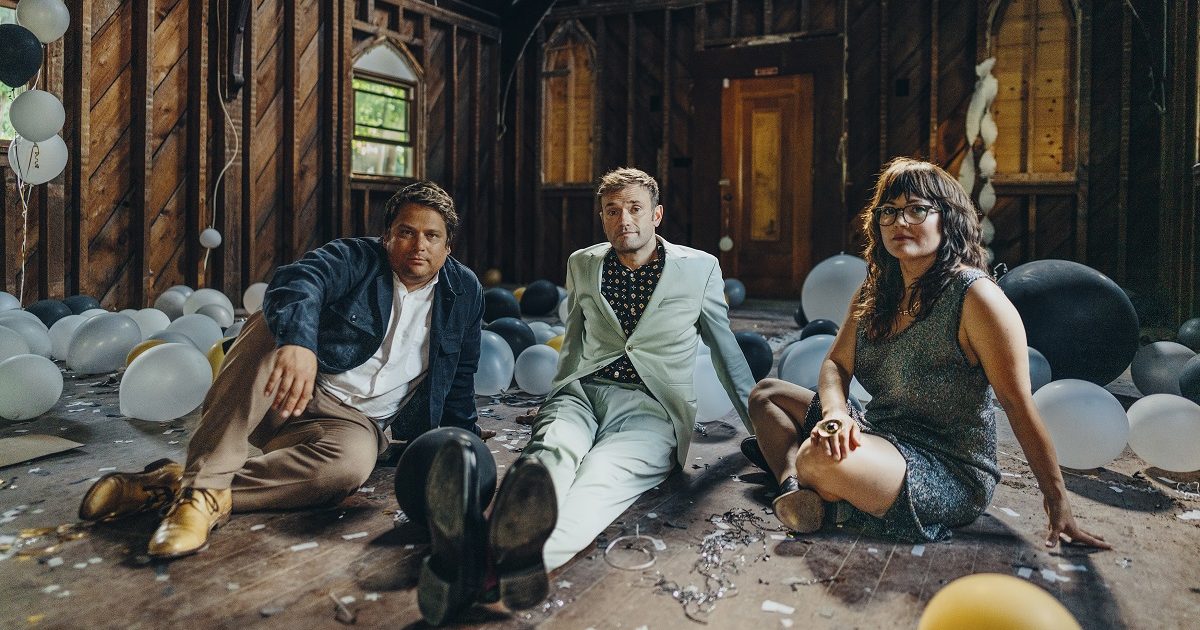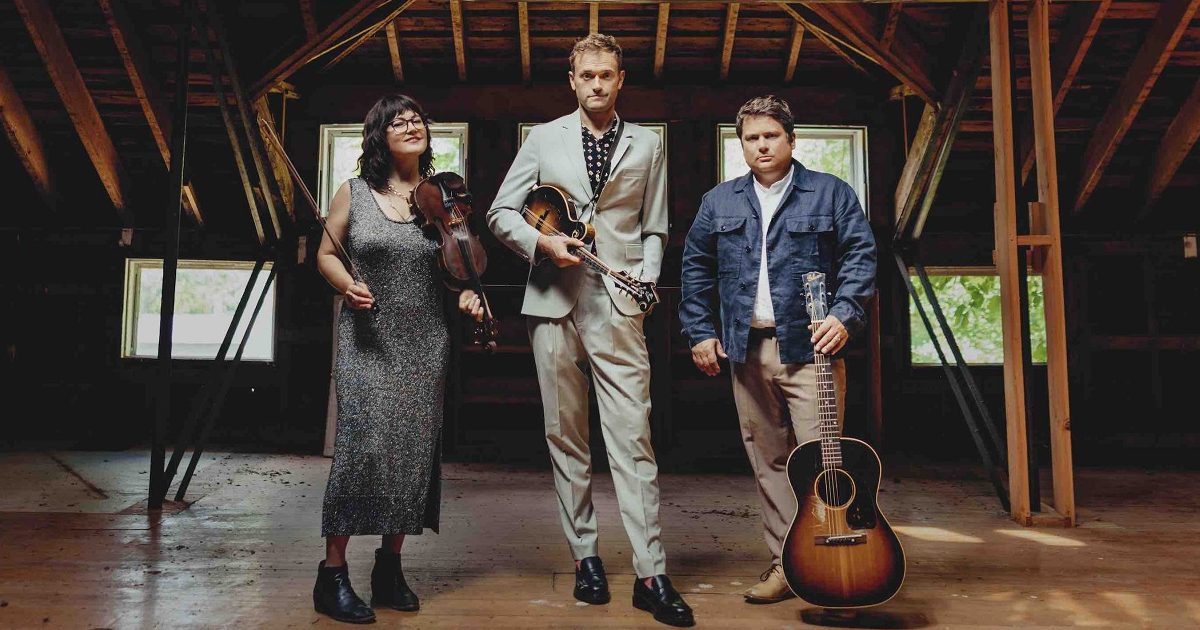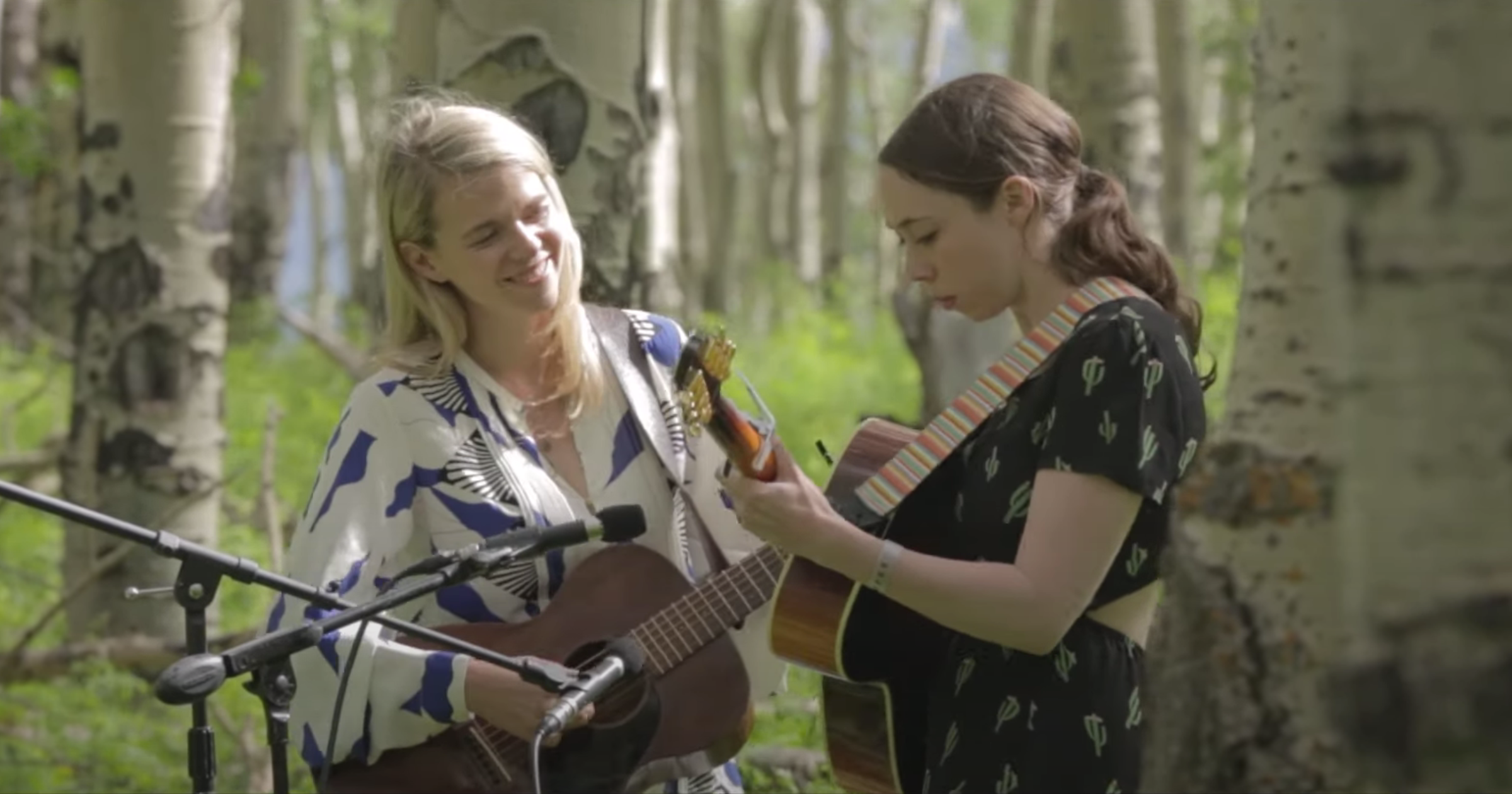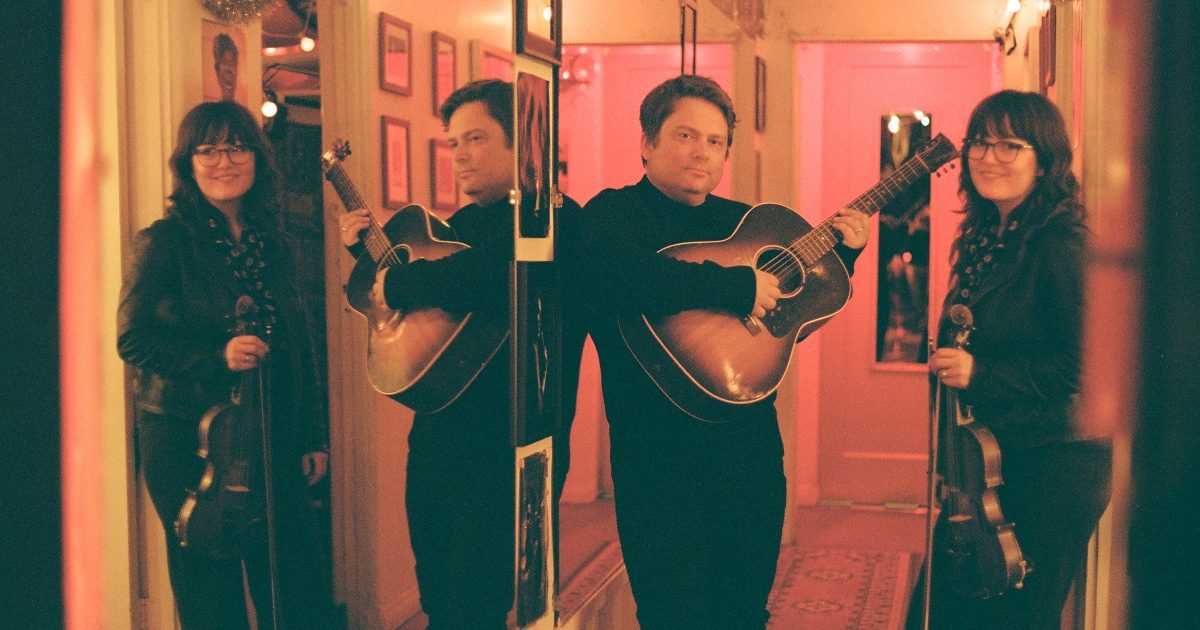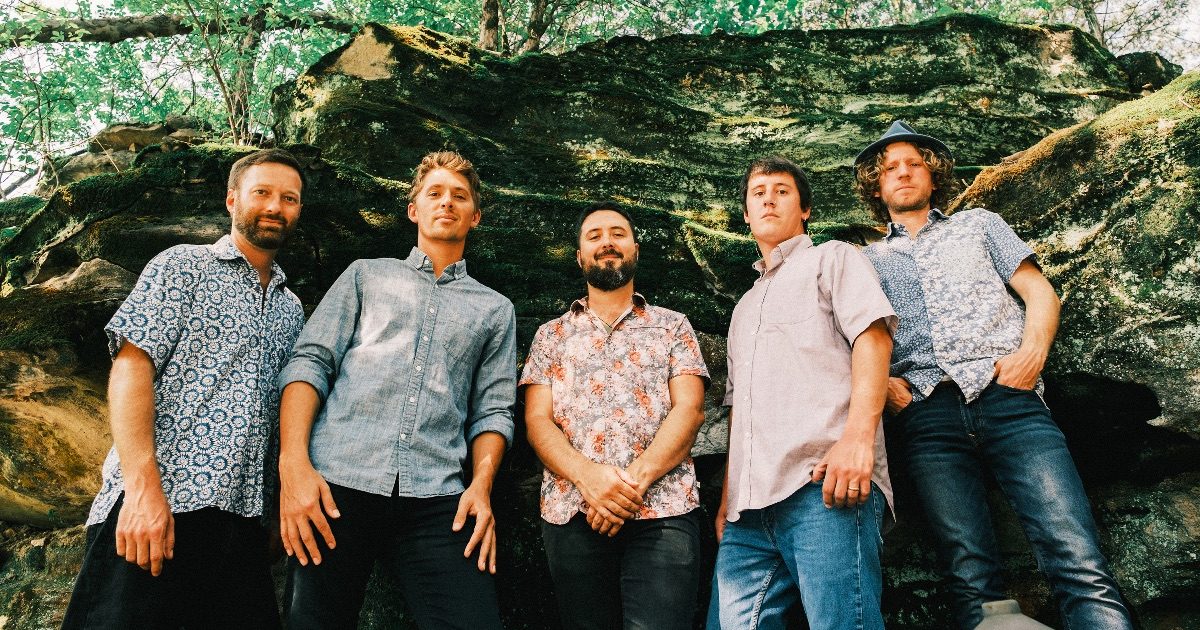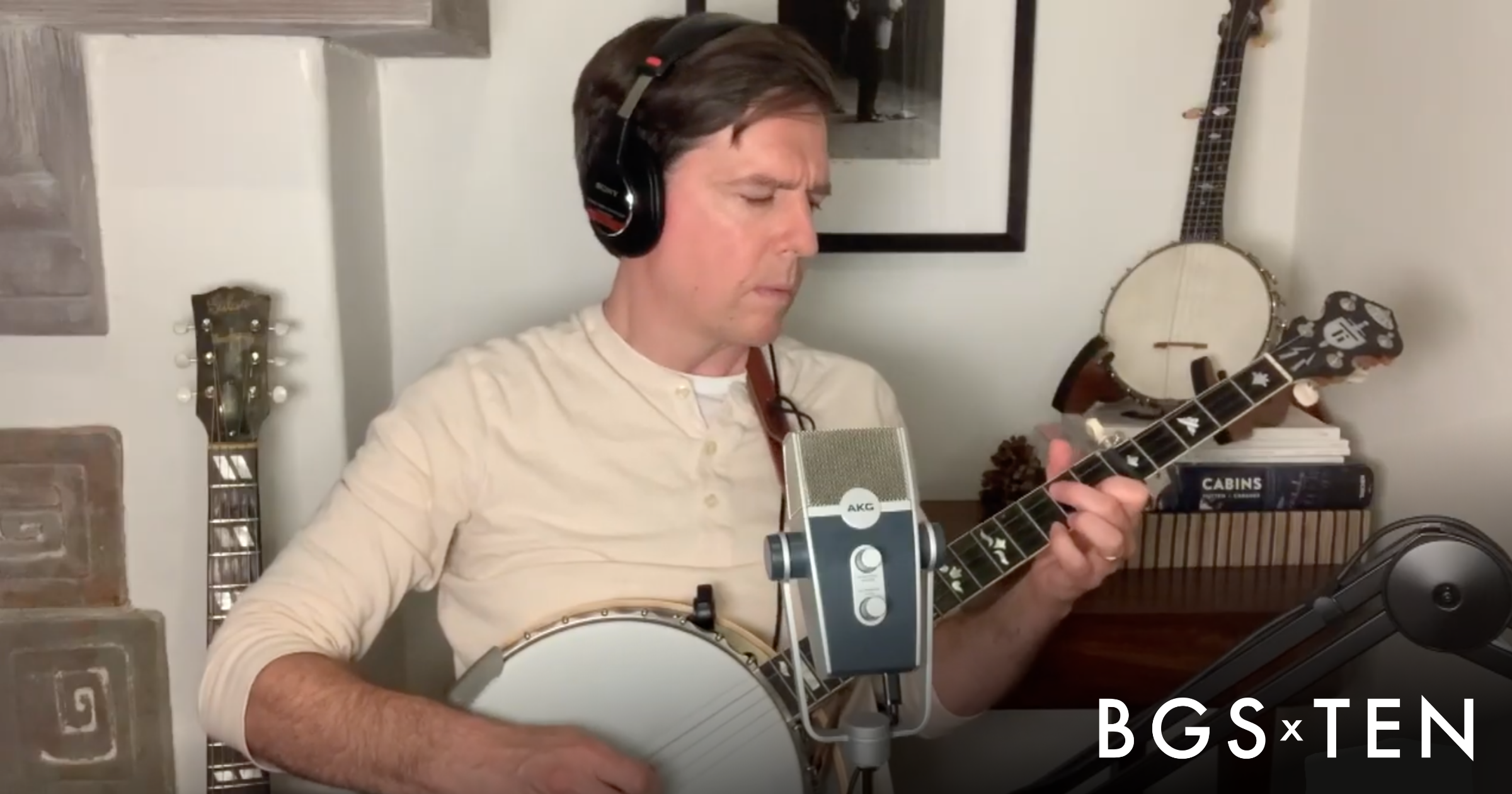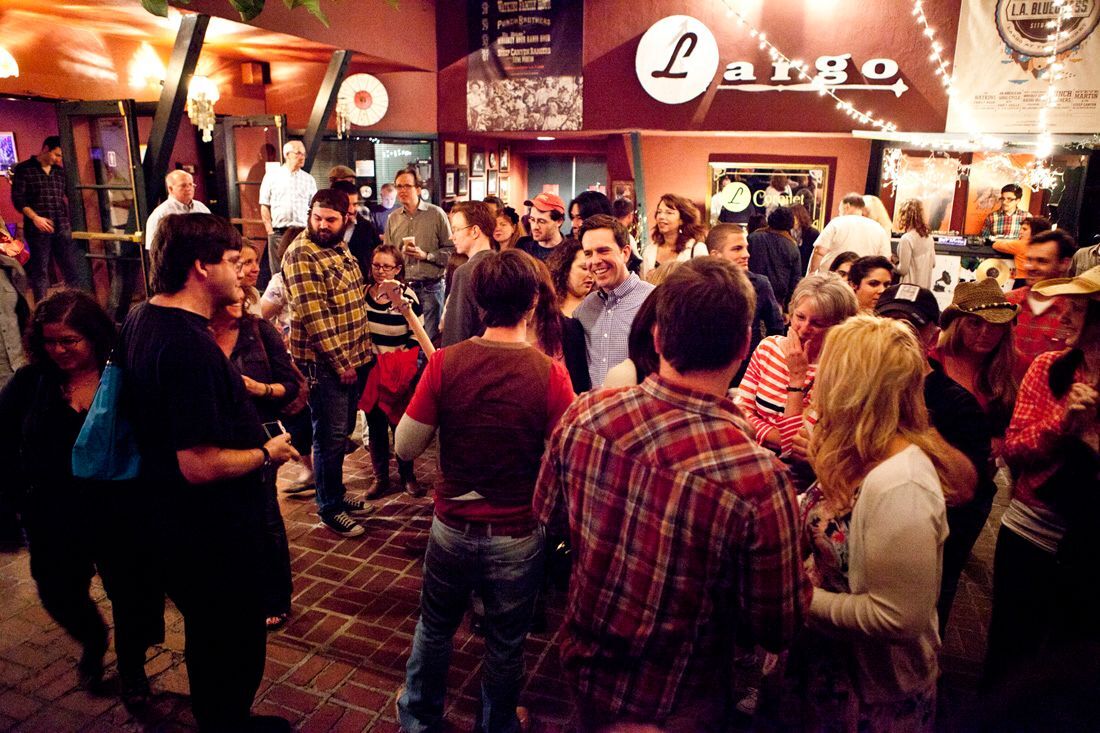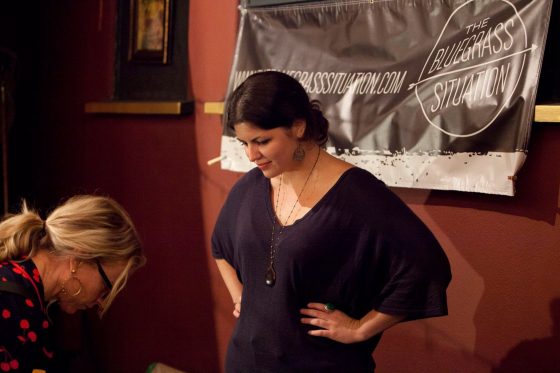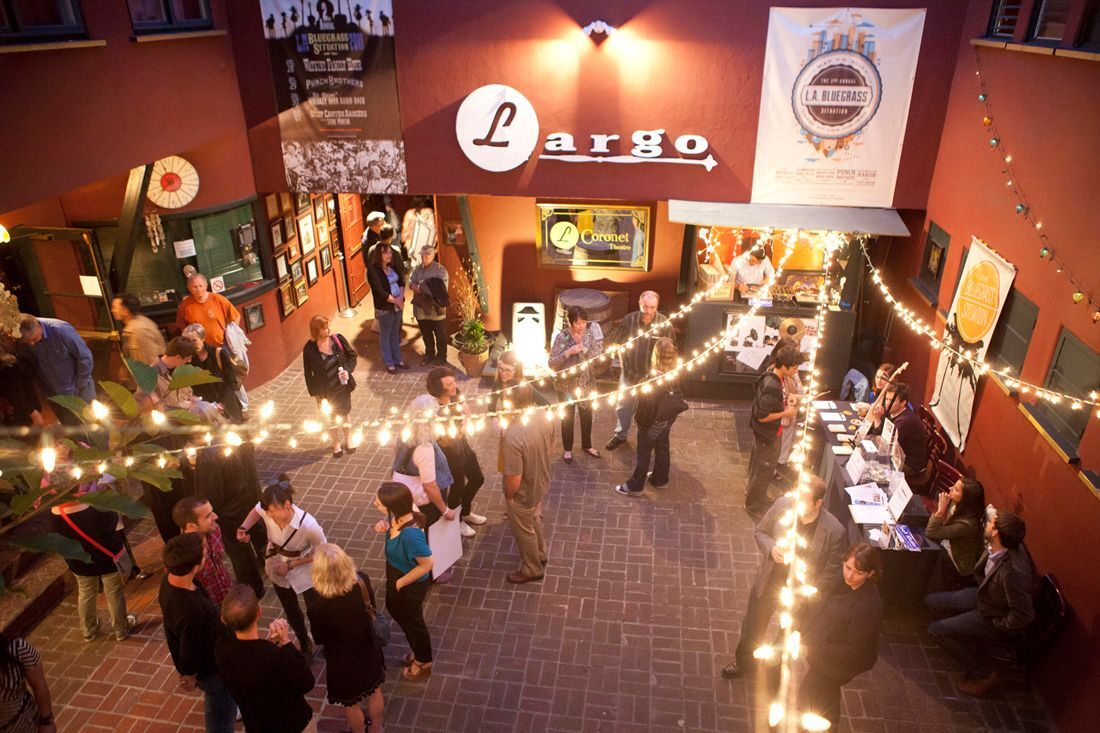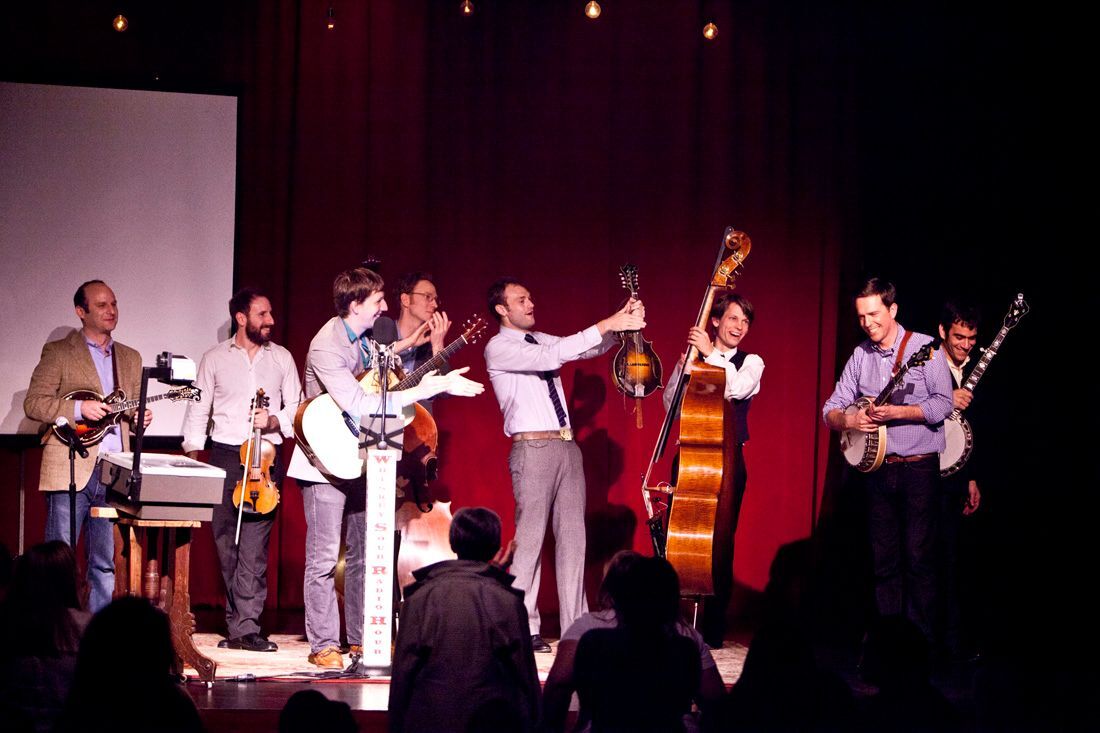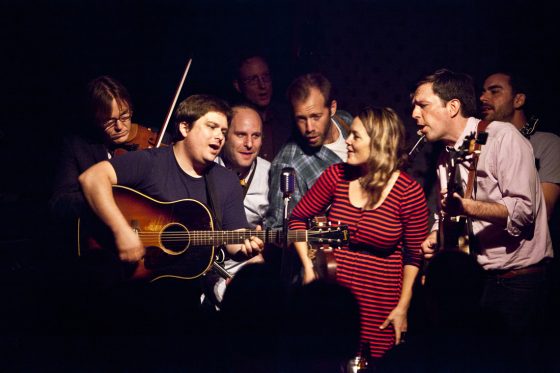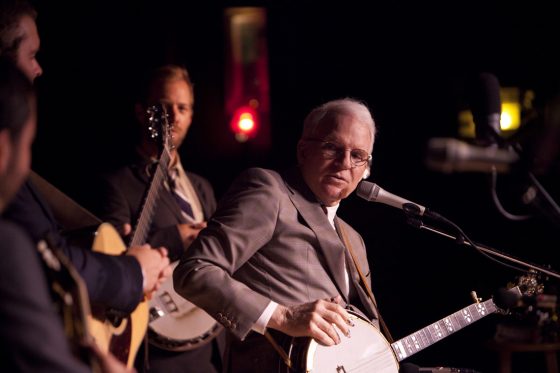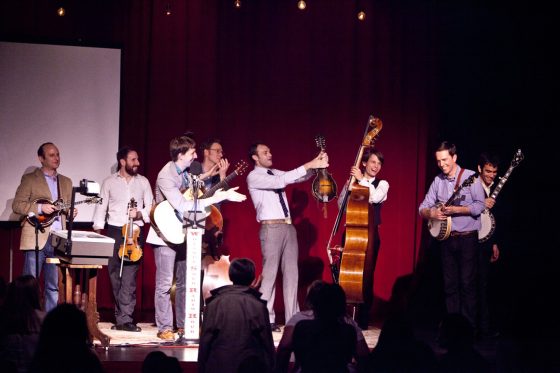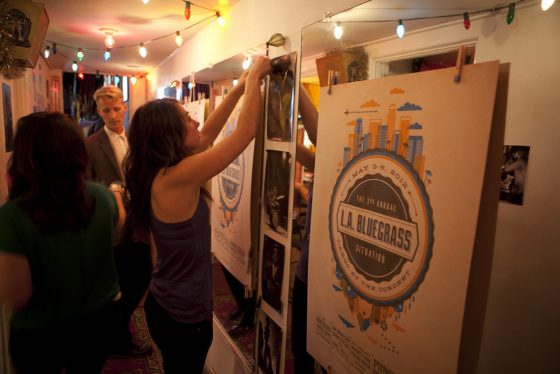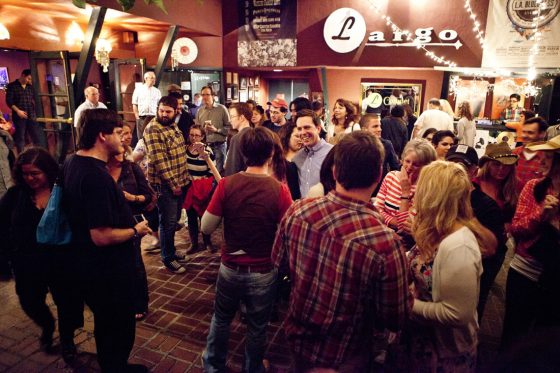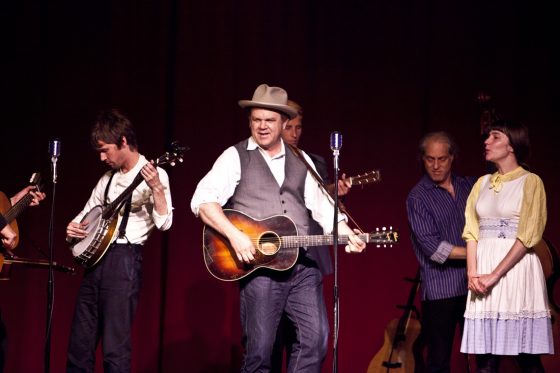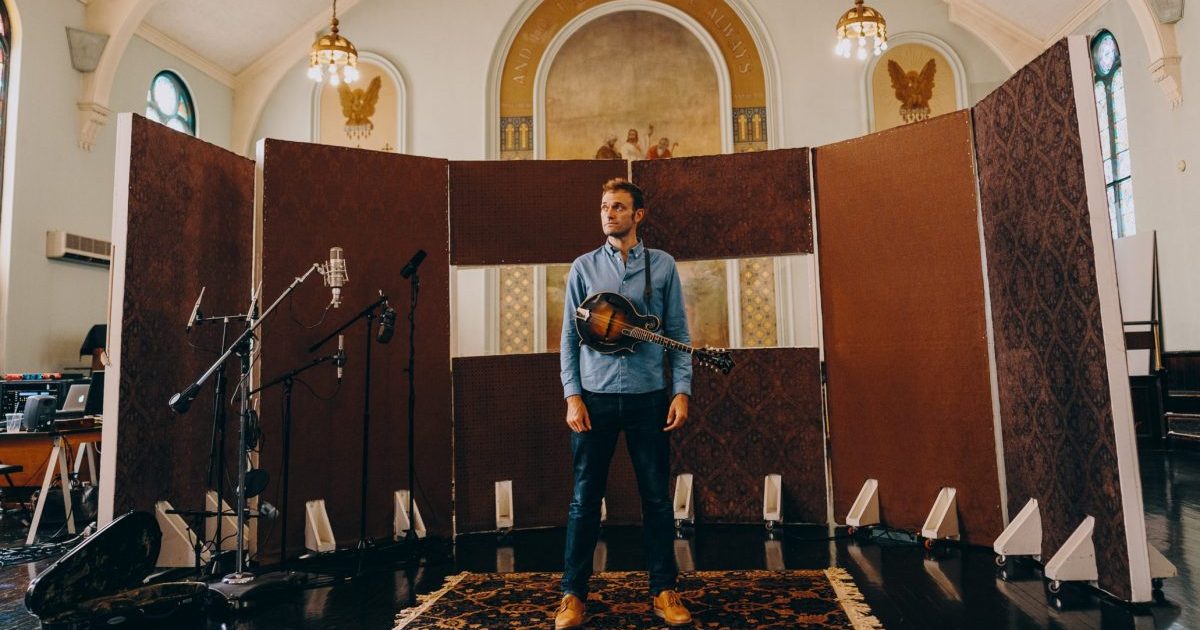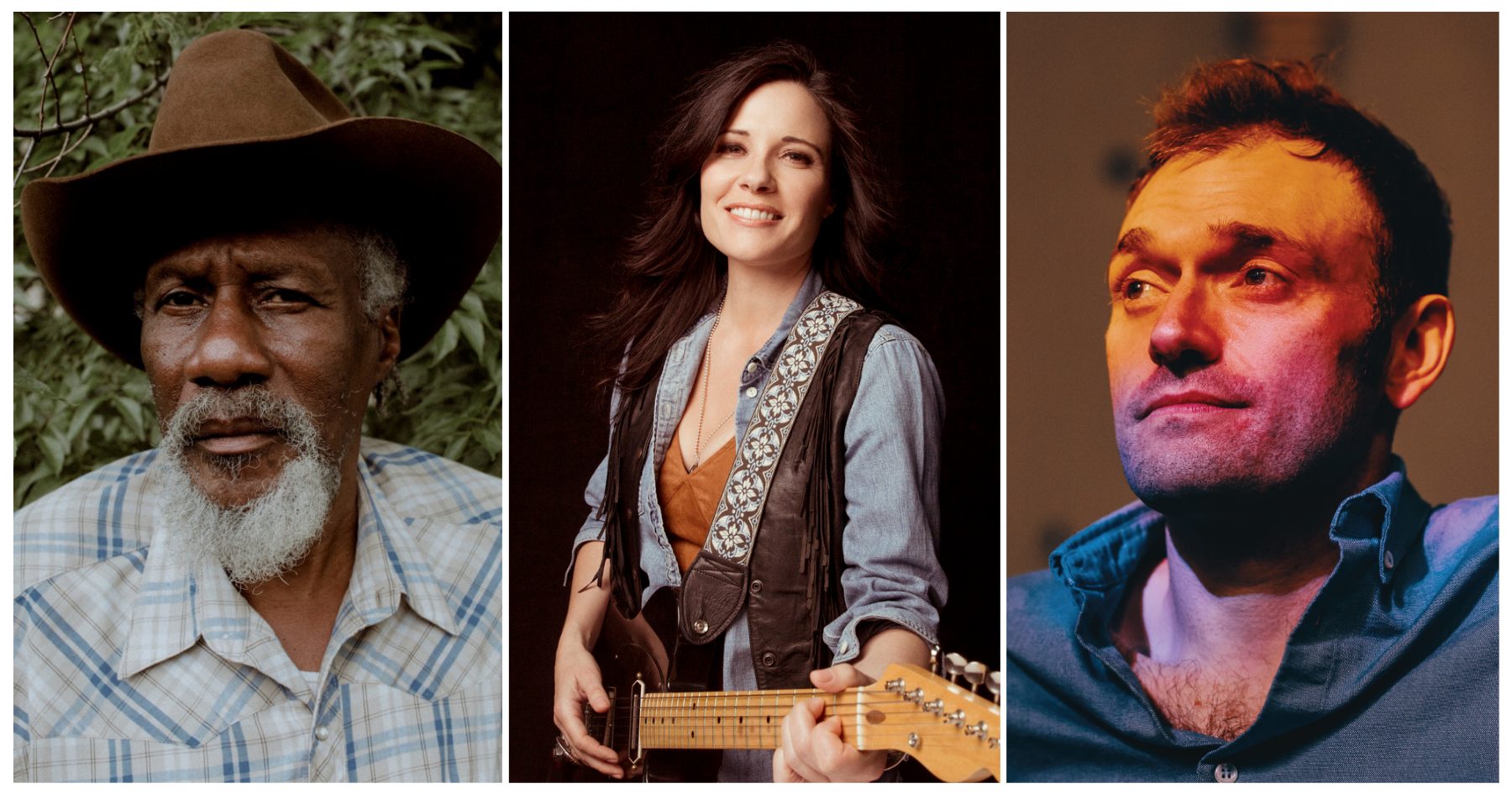To commemorate the 10th birthday of the Bluegrass Situation, co-founders Ed Helms and Amy Reitnouer Jacobs are taking it all the way back to the beginning. In the first installment of an ongoing interview series, the enthusiastic bluegrass fans reveal how they first met, their shared vision for a modern aesthetic, and the meaning behind the unexpected (yet appropriate) name.
Amy: As we’re looking back on 10 years of The Bluegrass Situation, it occurred to me that you and I have never really reflected on how all of this started and how this thing kind of built up. So I wanted to get our own take on it and… reminisce, stroll down memory lane a bit, and think about it.
Ed: We need a little oral history for the archives! [laughs] And for our own… ’cause it’s exciting to reminisce a little bit.
Amy: I’ll kick it off and ask, what was your intro to bluegrass? Why do you care about this music to begin with and what drew you into it?
Ed: The earliest I can trace back would be growing up in Atlanta, Georgia. My mom’s from Nashville, so we would take road trips from Atlanta to Nashville all the time. In addition to that, I spent many, many summers at a summer camp in the Smoky Mountains in North Carolina. That’s another road trip that’s about a three or four-hour drive from Atlanta.

So, on those drives, we’re always pulling off at truck stops and whatever, and we would pick up cassette tapes at the checkout counter. And my dad, who grew up in Alabama, was always a big fan of opera and classical music. He would grab these string band tapes for some reason. And I started listening to these very generic, early string band tapes when I was 8 years old in the car. They didn’t resonate with me as artists, but the music connected with me somehow. And I associated it with those places — Nashville and the North Carolina mountains.
Then as I got older, I was one of those kids that kind of thought everybody was fake, you know, like Holden Caulfield. Just distressed by all the artificiality of our world and of the people around me and like, “Oh, everyone at school, everything is so performative. Like, who’s real? Who’s the real deal?” And that kind of drew me, musically, into older and older music. I got obsessed with authenticity and where are the roots of things. … I think it scratched some itch that I had for authenticity-seeking, and probably allowed me to feel superior to all my classmates in junior high.
Then when I could actually get to a record store, I remember the very first bluegrass album that I bought was the Bluegrass Album Band. I didn’t know who J.D. Crowe and Vassar Clements and Jerry Douglas were, but all I knew was that on the cover of this CD at Turtle’s Records & Tapes in Atlanta was guys holding banjos and guitars and mandolins. So I bought that album and to this day it’s one of my favorite albums. I’ve never asked Jerry Douglas about this, I should, but it felt like the intention of those albums was to kind of just be the ultimate catalog of, you know…
Amy: I mean, it’s called the Bluegrass Album Band.
Ed: Right. They just called themselves the most generic name. And it’s almost like they were just trying to create a library of excellent bluegrass artists playing the canon or something. Or maybe they were really ahead of their time with like meta irony and they were just like, “We’re going to call ourselves the Bluegrass Album Band, ’cause it’s hilarious.”
And of course Tony Rice’s guitar playing on that – I was very much into guitar at the time, I later picked up a banjo – Tony’s guitar playing was so magical to me. I could not understand how human hands could play what he was doing. I would just pour over these solos. I remember the solo to “Your Love Is Like a Flower,” it just was like, how the hell is that being played? I could not wrap my head around it. And I listened to it a million times, and I didn’t have the technology to slow it down, so I couldn’t do that.
Amy: That album and that band really represent a generational shift. It’s not newgrass. It’s playing the canon, but with this mix of the new guard and some folks with some real cred from the second generation.
Ed: You’re right. It isn’t an old sound, what they’re doing. It’s a new sound at that time, because no one was doing Tony Rice licks before Tony Rice. But the harmonies are timeless and the structure of the songs is very traditional. That album means so much to me and I listen to it to this day and I’m still blown away! I actually can play that solo from “Love Is Like a Flower” now, but only at about half speed. And it’s one of the proudest things, when I finally found – someone had transcribed it in tablature, and I was like, “This is string theory explained. This is like if you had Carl Sagan sit you down and explain the mysteries of the universe.” I was like, “Holy shit, I got it! The holy grail!”
 Amy:
Amy: Yeah. To me, it’s still magic. ‘Cause I am not someone who can play an instrument, at least very well, so when I first heard bluegrass, I was just like, “How does that happen? How do you even get the notes from your brain to your fingers and do it so well, and in a way that I’ve just never heard before?” It still kind of blows me away.
Ed: Can I ask you the same question? Where did you first connect to bluegrass music?
Amy: I grew up in rural Pennsylvania, and there was a lot of country and bluegrass around there. Admittedly, I didn’t like it because to me it represented… I mean, I was really busy listening to showtunes and learning Sondheim lyrics and stuff. I was that kid. And I just thought country and roots music was inherently uncool and representative of this place that I felt like I was stuck in.
It wasn’t until I went to college in North Carolina… It was probably the first few weeks of school, one of my housemates who is still a very dear friend of mine invited me to a show, and it was Nickel Creek. I had never heard of them. I had no idea what I was going in to and Erin said, “I just think you’re going to like this. Just come with me to the show. I’ll drive. We’ll go.” And I can honestly say, that show changed my life. I can still remember the whole show so clearly.
Ed: What year are we talkin’?
Amy: 2005? Somewhere around there. I was kind of reeling from it, because it had been a really long time since I felt like I had been challenged by music that was being played by young people, that I really connected with, but also was just kind of flummoxed by. From there it became a deep dive. I was really fortunate going to school where I did, that there was great bluegrass around. I mean, there was this bar about 30 minutes away called The Cave in Chapel Hill, and we used to go see the Steep Canyon Rangers play there every month. And I mean, this is a tiny underground basement bar, maybe holds 50 people, and they would just have bluegrass jams.
Ed: How close were you to Asheville?
Amy: It was about three hours from Asheville. Asheville is where we went for, like, fall break and our little weekend trips and stuff. We would go to Boone and Asheville, and even Mount Airy had a bluegrass fest that we went to. So that’s when I really started getting into it. And I could say, I think my first significant album purchase was pretty soon after that first concert. It was Why Should the Fire Die? by Nickel Creek. I played that into oblivion and had it in my car for like, 10 years, back when we kept stacks of CDs in our cars.
From there it kind of fell into the background, because I was studying film and I moved to New York. I was working all the time and didn’t really make space in my life for music. By the time I moved out to LA, I was working for a producer and I had one or two friends out here that I knew. Again, working a lot, not making any money and trying to find my place in the city, and not really connecting with a lot of the other assistants that I was meeting at the agencies. And I remember going to see the Get Down Boys at some bar on the west side of LA and having this thing reignited in me that I had felt back in college and was like, “OK, I think these are my people.” There was this momentum happening in LA at that particular time. And that’s how I started getting to know the scene out here and had the idea for the BGLA blog.

Ed: Tell us about BGLA.
Amy: I admittedly was a little bored at work. I was working at the Academy of Motion Pictures at this point, which was exciting, especially for three months of the year around the Awards, but the rest of the time was kind of slow. So I started this Blogspot and wrote about what was happening on the scene in Los Angeles. And then people started pitching me, cause I don’t think anybody was really covering it out here. So suddenly I was getting inquiries to interview these people… I mean, I started going really deep in the music and the history and background and getting to know the scene out here. But I remember getting connected to Sean Watkins (of Nickel Creek), and it was this beautiful, full-circle moment. It was the first time I met Sean and got to talk to him, and we became friends and kind of opened a whole other door to the roots music scene and what it could be. And then I think I met you pretty soon after that.
Ed: So when did we meet? I cannot remember.
Amy: Well, I remember when we first met, but I doubt you remember when we first met. I remember this because it was probably the most nervous I’ve been in my whole life. I saw you at a Sarah Jarosz show at Hotel Cafe. And I walked up to you and gave you one of my business cards for Bluegrass LA. And I was like, “I think you’ll like my blog.” That was it! And I don’t imagine you remember that, but that is technically the first time I met you.
Ed: At some point we had a cup of coffee to talk about possibilities.
Amy: Yes, that’s true.
Ed: But then maybe we bumped into each other… I assumed it was Largo, but I have the vaguest memory of getting a business card from you. So yeah, that part tracks.
Amy: Why don’t you talk about the LA Bluegrass Situation, because that predates me.
Ed: You weren’t even a part of the first LA Bluegrass Situation?
Amy: No. I was there. I went one night. But we didn’t know each other at that point. I just went as a fan.

Ed: The first time I ever went to Largo was when John Krasinski took me to see Aimee Mann playing at the Fairfax Largo. We went in through the back and I just was like, “Whoa, what is this incredible vibe?” This whole place is just so, so cool. And eventually Flanny (the owner of Largo) invited me to do stand-up on some people’s shows, and one night he said, “Why don’t you do a show?” And I thought, “OK, cool. It’d be fun to mix music and comedy.” So I think the first show that I did at Largo was called “Hams and Jams.” [Laughs] The idea was like, “Oh, it’s hams, like comedy people, and jams, music people!” And I just mixed up some comedians and musicians with a terrible name that Flanny was so gracious about rolling with.
We really loved that combination, but I was really struggling to wrap my head around the LA bluegrass scene. It just was so disparate, but somehow we managed to get excited about trying to cultivate the scene and coalesce things a little bit more. And I think that was the idea… that was the sort of original inertia behind the first LA Bluegrass Situation. The name literally just came from Flanny talking about it before we named it. He just kept talking about it as the bluegrass situation that we were dealing with. So then when it came time to be like, “What are we going to call it?” I was like, “Well, you’ve been saying this awesome thing because there’s something a little cheeky about a ‘situation.'” Like, it feels like, you know, “We got ourselves a situation, here!” Like it just kind of has some irreverence built into it.
So that’s what we named it, and Flanny and I both pulled as many strings as we could with whatever relationships we had at the time and put a totally magical lineup together. Like I still can’t wrap my head around it. I mean, it was Dave Rawlings and Gillian Welch and Steve Martin and Steep Canyon Rangers and Nickel Creek and Punch Brothers and the Infamous Stringdusters… Oh, and of course the Lonesome Trio, my crew, with my friends Ian and Jake. We were sort of the hosts.
Amy: I remember I got an email from you not long after that, which was pretty shocking. What was the impetus of that, do you remember?
Ed: Yeah, I think that I was feeling pretty heady after that first LA Bluegrass Situation and probably getting over my skis a little bit and being like, “We can create the ultimate hub of bluegrass for Los Angeles and it will be this Tower of Babel that everyone will flock to!” I had so many ideas. There were so many things that I found lacking in Los Angeles that I had taken for granted in New York. There are just so many website resources. “You want a banjo teacher? Look here, there’s tons in New York City. You want to see what shows are happening? Look here!” You could just find stuff in New York City and you couldn’t find stuff in Los Angeles.
Amy: I look at the branding of that initial site and that first logo — I think DKNG did our first logo in Santa Monica — and I remember being really proud of the fact that we didn’t look stereotypical of the era.
Ed: You’re so right. And I give you so much credit for that because the very first LA Bluegrass Situation, Hatch Show Print did a bunch of posters for us. And they were so cool. I still have a bunch and I’m really proud of that, but it was also leaning really hard into a very conventional, stereotypical bluegrass aesthetic. It was a funny wake-up call for me – that plus your input. It helped me realize that what we wanted to do and where we wanted to go as fans and supporters of this idiom was not retro, like it was…
Amy: Forward-thinking.

Ed: Forward. And that artists like Chris Thile were doing that musically, right? But there was a little bit of a reckoning of “What’s our brand going to feel like? What do we want it to evoke? And who do we want to connect with? Do we want to connect with young people who are finding this stuff for the first time and finding it really fresh and exciting?”
Amy: That was always the crux of it for me. To a large extent, that aesthetic is still very alive and well within the roots music community. I had an inkling that there was an audience that had different tastes, but still could love this music and that it didn’t all have to look the same way. I could have never predicted where it went and what we’ve worked on since, but I think at the beginning we were very “of the moment.” It was the same time that Mumford & Sons and the Lumineers were on the top of the charts, and there was this kind of “authenticity” movement taking place.
Ed: I remember going to business meetings with Hollywood producers and one guy had a banjo in his office. And I was like, “You play the banjo?” And he’s like, “No, no, but I want to learn!” But you’re right. It was a moment. I’ve felt like an old fuddy duddy since I was 12 years old, but I was like, “Was I ahead of the curve here?”
Amy: Yeah, similarly, I’ve kind of always felt like an old soul; I never really felt like I truly fit in to my time, so I think there was something that really drew me in to that zeitgeist, but what amazed me was that once we really got into it, it was so much more complex and modern and exciting than I ever expected.
Editor’s Note: Look for the next part of this conversation with Ed Helms and Amy Reitnouer Jacobs in the weeks ahead.
